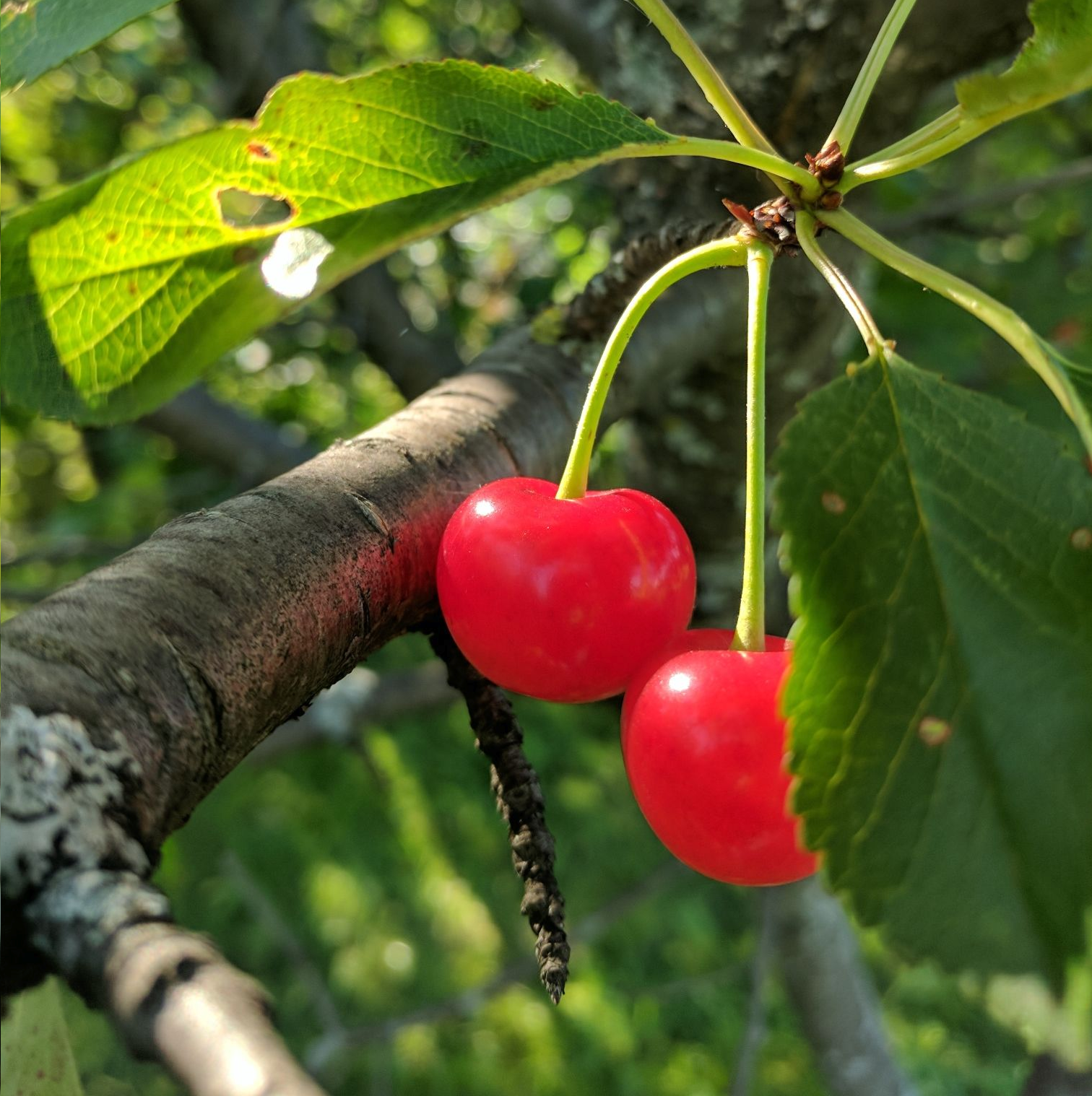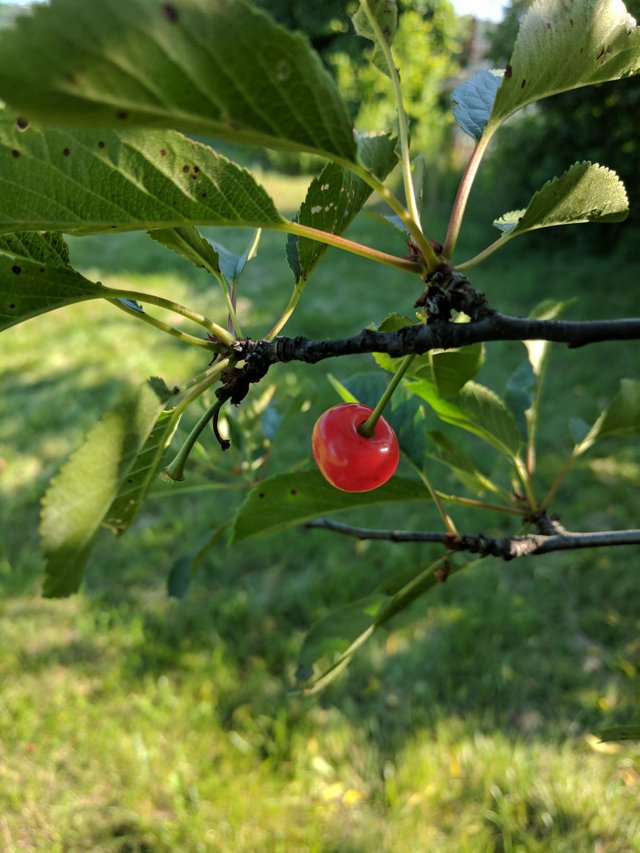Sour Cherries in Ontario - Save the pits and start planting trees!
Sour Cherries (prunus cerasus) are a delicious, tart variety of cherry that can be found scattered throughout Southwestern Ontario - most commonly in the Hamilton/Niagara region. They are also very abundant in Central/Eastern Europe, this is a local crop we've recently taken interest in. Many people may have only ever eaten sweet store-bought cherries, and not realize the bounty that may be in their own neighbourhood! Sour cherries can be eaten raw, juiced/blended, or used in cooking or baking to add a mouthwatering "zap". They are even great dried, either on cereal or eaten as-is.
The following map shows 2006 worldwide sour cherry production:
We recently found some beautiful trees in a local hydro field nearby and snapped some photos

They were bursting with flavour! And it got me wondering... can the pits be saved to grow your own sour cherry tree? In fact, they can - all that is needed is some patience and sufficient stratification before doing so.
The first challenge is finding a good specimen. Cherry trees like full-sun environments and rich soil, and are often found in similar locations as Apple and Pear trees. The exploration process can be fun, and there are other resources to assist with this. Falling Fruit is a nonprofit website that allows people to geotag the locations of their findings. An ideal resource for the urban forager.
Once you've located a tree, start picking! Deep-red cherries are ripe and ready for eating, and are typically ready by late June/early July. Retain the pits - they can be cleaned in warm water to remove any fruit or debris left attached. Afterward, dry pits on a paper towel for 3-5 days. Remember to keep away from pets and other animals.
At this point, you have two options. If you are in an area with cold winter climates, the pits can be planted directly in the fall months. This will allow for stratification through the winter, and you can expect the trees to start sprouting in early spring. They typically need 3-4 months of cold weather to properly prepare. The alternative is to put seeds in the refridgerator for around 10 weeks. Remove seeds for at least 24 hours before planting. They can then be sown directly in the spring.
Cherry trees should ultimately be set around 5-6m apart, but they can be started around 30cm apart and transplanted once they reach about 5cm in height. 2-5cm in depth is ideal - you can make an appropriate hole with your finger. Do not plant in soil with high clay content, as the plants will not do well. Keep soil moist but do not overwater. Also, keep patient! seeds will take awhile to germinate, and generally cherry seeds only have around 50% germination rate. It's also recommended to protect your plants from pests, as cherry pits will be a desirable snack for many rodents. Mature trees will be a target for birds, but are generally less susceptible to other pests compared to sweet cherries.

Excited yet? One or two mature trees can easily product several kilograms of cherries in a season. Good luck with your harvest. Hope you can enjoy as much as we did!
Great idea! Love cherries! @vegiseeds